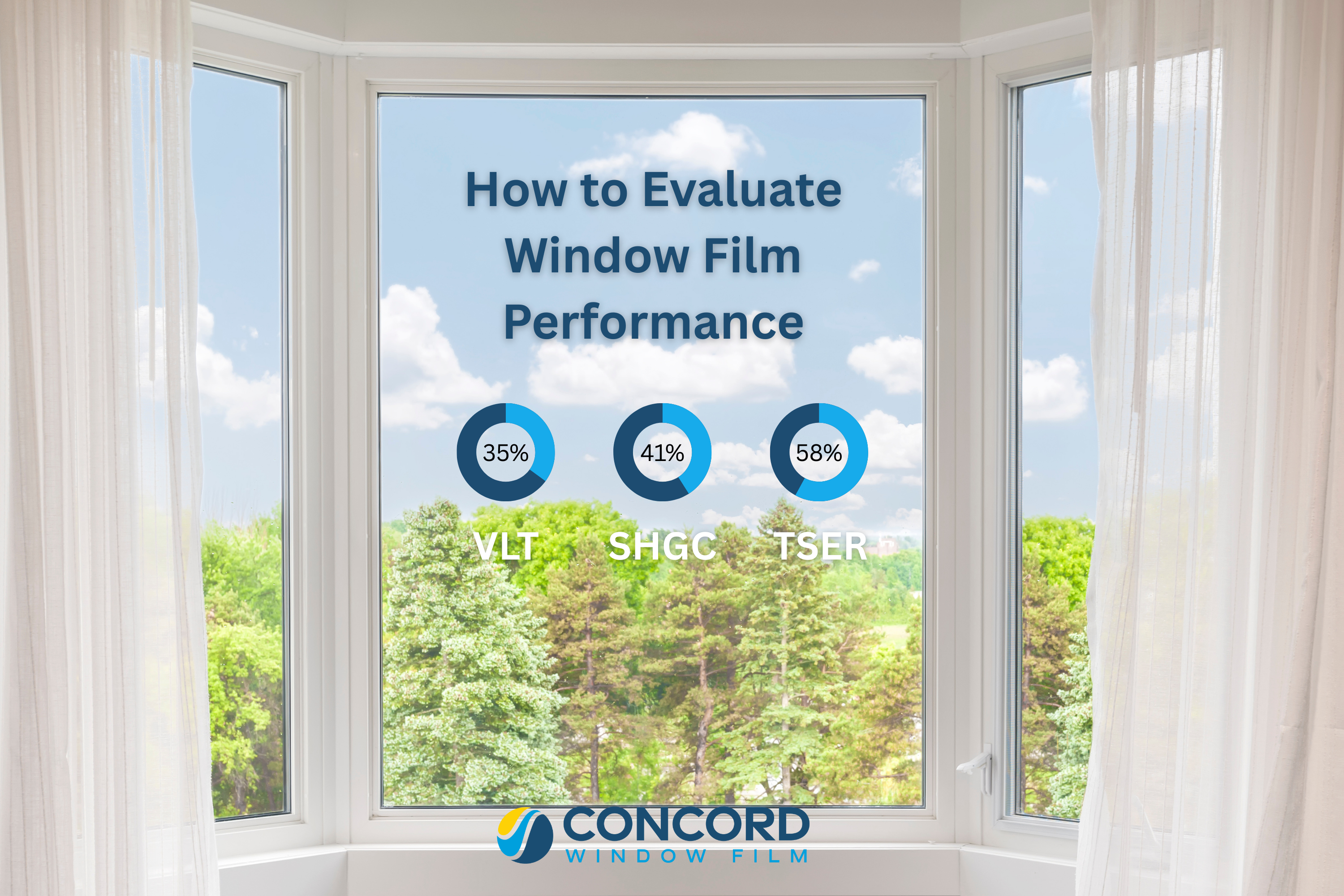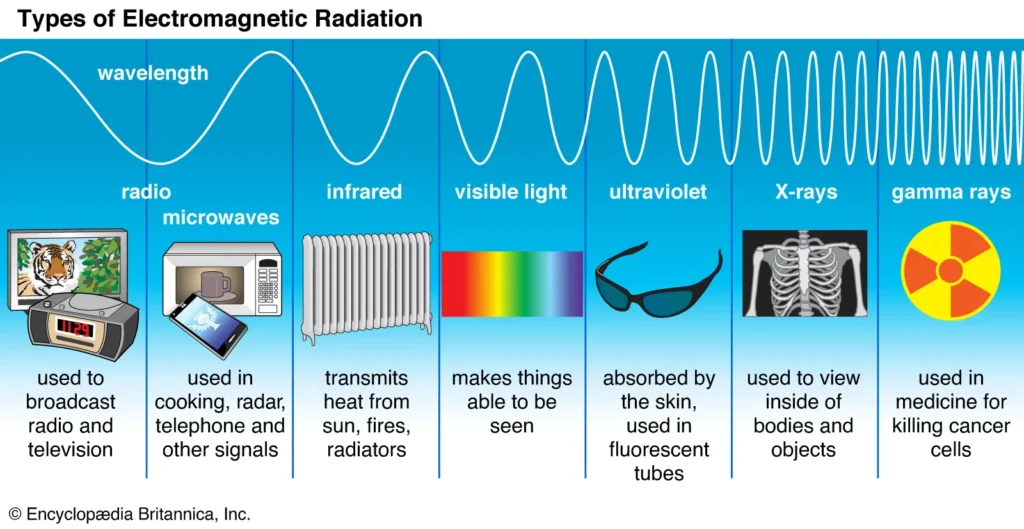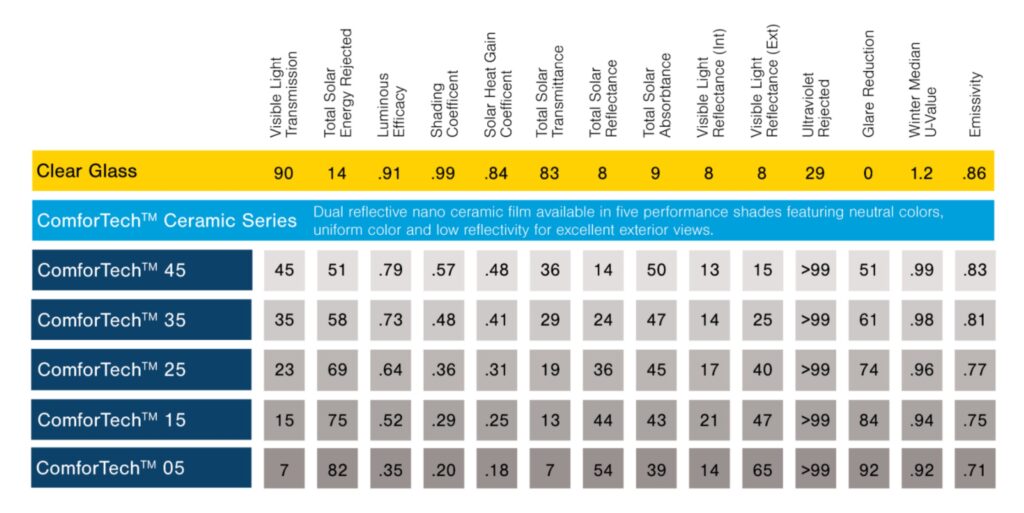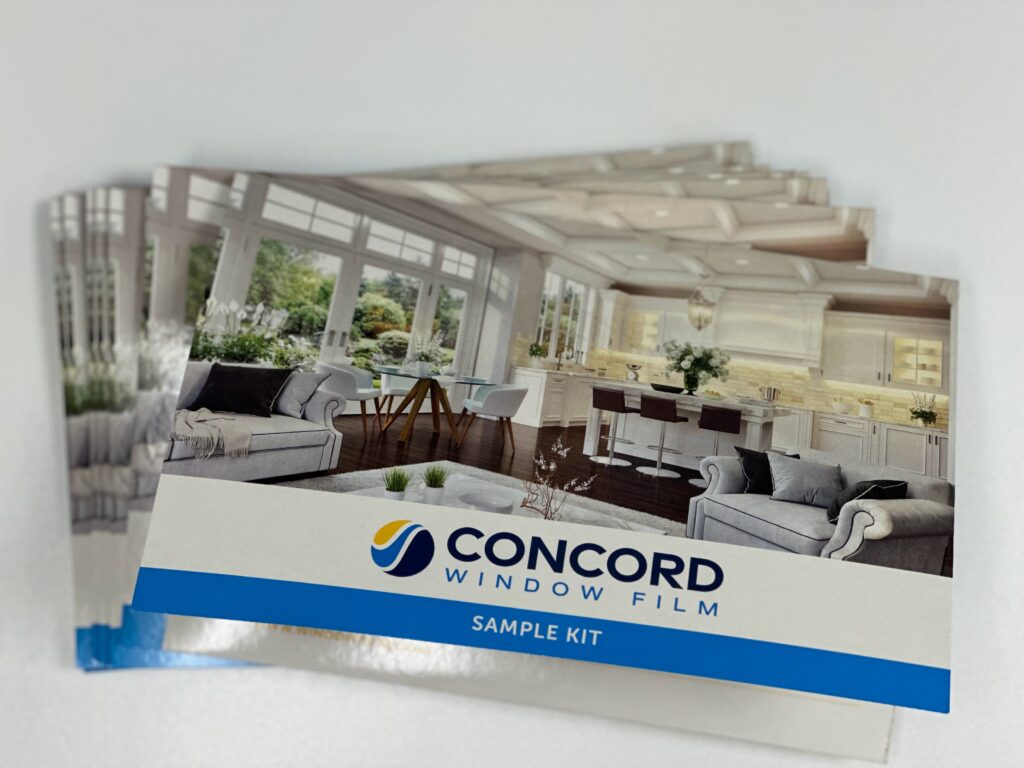
FREE SHIPPING ON PRECUT KIT ORDERS OF $100 OR MORE

We often get asked about infrared radiation and our film. People ask us if we have an “IR film” or “how much infrared radiation does our film block?” These questions have come up because several film manufacturers and resellers have marketed their films as “infrared films” or “IR films”.
Concord Window Film has always followed the National Fenestration Rating Council (the window AND window film industry’s measurement body) and the IWFA (our industry’s association) guidelines – and not promoted an IR measurement when it comes to our film. This post will explain why.
First, let’s discuss what infrared radiation is:
Infrared radiation is energy coming from the sun that is a part of the overall electromagnetic spectrum – the energy that reaches Earth from the sun. About 50% of the energy that hits the earth’s surface is in the form of visible light, 40% is infrared and longer waves like radio and microwaves, and the remaining 10% is UV light and shorter waves like x-rays and gamma rays.

Infrared radiation refers to electromagnetic waves with longer wavelengths than those of visible light. The range of infrared radiation typically spans from approximately 700 nanometers (nm) to 1 millimeter (mm).
Infrared radiation is often thought of in a basic way as heat energy because infrared radiation can’t be seen, but we can feel it as heat. But the reality is that all solar energy that reaches earth contributes to heat.
Some films equate heat rejection only with infrared light rejection – so called “IR films”. And based on what we learned above, it may seem logical to talk about window film’s heat rejection ability in terms of how much infrared radiation it blocks.
However, there are reasons why infrared should not be used as a standard measurement for heat for window film:
The NFRC (National Fenestration Rating Council) is an organization that develops and implements energy performance ratings for windows, doors, and skylights in the United States. While the NFRC primarily focuses on evaluating and rating the thermal performance of fenestration products, it does not specifically test infrared radiation transmission.
The NFRC’s primary objective is to provide consumers with standardized information about the energy efficiency of windows, allowing them to make informed decisions when purchasing or specifying window products. To achieve this, the NFRC conducts tests and provides ratings based on factors such as U-factor (which measures heat loss or gain), Solar Heat Gain Coefficient (SHGC), Visible Light Transmittance (VLT), and (for windows) Air Leakage (AL).
The NFRC also rates window films and when they do, they don’t report IR either. The NFRC uses SHGC. SHGC encompasses all the energy causing heat (including the IR) and it gives the true picture of the film’s performance. Learn more about Solar Heat Gain Coefficient measurement and how to interpret it for window film.
Recently, the IWFA came out with a stance on using infrared radiation measurements because of the confusion that the marketing of “IR films” is having in the marketplace with consumers.
According to Darrell Smith, IWFA Executive Director, “Consumers need a way to compare one product from three different manufacturers and compare which is the best infrared reflector,” says IWFA executive director Darrel Smith. “IR rejection alone is not a measurement of the total heat control of a glazing system. You have to use the Solar Heat Gain Coefficient.”
Here is a snapshot of the guidance:

Our solar control film, ComforTech™ Ceramic Series, is rated by the NFRC and we publish the performance specifications of our film on our website – you can find them here.

If you are looking for a film that will reject the maximum amount of heat, you want to look at the TSER and SGHC performance measurements:
TSER is the percentage of incident solar energy rejected by a glazing system which is equal to solar reflectance plus the part of solar absorption which is re-radiated outward.
Read more about total solar energy rejected.
This is the sum of incident solar energy that is transmitted inside through the glazing system. It includes solar energy directly transmitted and the part of absorbed solar energy that is released inwards. SHGC is the fraction of incident solar radiation that enters the building through window glass. SHGC is expressed as a number between 0 and 1. The lower a window’s solar heat gain coefficient, the less solar heat it transmits into the home.
So, if you are not looking at IR rejection, how do you pick a solar control window film? In general, the darker a window film is, the better the performance of the film will be. For folks who are concerned about making their home too dark, you should consider a film’s VLT or visible light transmission.
Visible light transmitted is the ratio of visible solar energy (380-750nm) that passes through the glazing system to the total visible solar energy falling on the glazing system. The lighter the film, the more visible light it transmits into the home.
In general, we advise folks to choose the darkest film they are comfortable with to maximize the heat rejection properties of the film. And we think the best way to determine what the right shade is for you is to purchase a sample kit.
Because film will look different on windows based on the part of the country you live in, the direction the window faces (N, S, E, W), the time of year, and the time of day, it’s impossible to know what the film will look like in your space until you try it. The sample kit allows you to see the film on the windows in your home (inside and out) to determine what works for you.

Our sample kit comes with seven pieces of 5” x 7” film and includes all 5 ComforTech™ Ceramic Series shades, plus Matte White and our Silver 15 Reflective film. It costs $5 to purchase, but the kit contains a $5 off coupon for use on your film order.
You can order a sample kit here.
We hope this helped clarify how infrared radiation should be thought about for window film.
To sum up, infrared radiation is a part of the electromagnetic spectrum and is felt as heat. But it is not the only source of heat.
IR Radiation comprises the spectrum from 700nm to 1mm on the electromagnetic spectrum. In order for a film to claim it blocks 97% of IR radiation – it must be blocking 97% of the FULL spectrum. Most films sold today aren’t doing that.
IR rejection % is not a good proxy for how much heat your film with reject.
The better measures are: TSER – total solar energy rejected which is an exact measure of how much heat a film rejects from entering a home. And its complement, SHGC which measures how much heat the window lets into a home.
For maximum heat rejection, you want to look for a high TSER and a low SHGC.
As always, if you have any questions, reach out to us at support@windowfilm.com, 888-206-1413, or chat with us on our website.